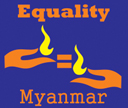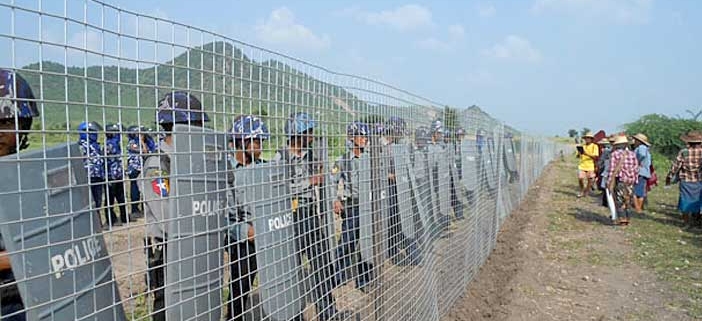Burma’s Police Get EU Training on Crowd Control
Friday, 08 November 2013 00:00The Irrawaddy
RANGOON — Burma’s police are for the first time receiving training from the European Union, which is providing the Southeast Asian nation’s law enforcement personnel with instruction on crowd control tactics.
A team from the 27-nation bloc began training about 500 police officers on Monday, according to Ko Ko Aung, a Rangoon Division police chief. The course, which began this week at the Police Battalion No. 8 headquarters in Rangoon, will last 18 months and includes training on handling mass protests and personnel deployment strategies, as well as human rights education and the provision of riot gear.
That last aspect of the EU program raised eyebrows among some human rights advocates, who questioned whether providing crowd control equipment would contravene a ban on arms exports from the European Union to Burma.
Aung Myo Min from the Human Rights Education Institute of Burma (HREIB) suggested that the riot gear might be a trial balloon for the potential lifting of the arms embargo in future.
“They want to see how it will improve [crowd control in Burma]after the training. They want to see this first, then they may lift the arms embargo,” Aung Myo Min said.
The training marks the latest push by Western nations to build links with Burma’s reformist government. Since President Thein Sein took office in 2011, Western nations including the European Union and the United States have lifted sanctions, sent business delegations and begun tentative re-engagement with Burma’s military.
An EU delegation first met with Burmese police officers in March to discuss potential cooperation between law enforcement personnel. Under the program, nine other battalions of similar size to the Rangoon contingent will be trained in jurisdictions across Burma.
“We began training on crowd management this week. Another training will focus on community participation [in law enforcement],” Ko Ko Aung said.
“There are good things to be learned with this training, but I found that some of the training does not apply to what police here have to deal with,” Ko Ko Aung added.
The training being provided will be valuable to police officers across Burma, according to Tun Naing Zaw, a police inspector in Naypyidaw. “They [officers]prefer giving training to police who are on the ground first,” he said, referring to the initial batch of trainees, who are posted in Burma’s largest city and are thus likely to put the crowd control training to good use.
“We need this type of training [in Naypyidaw]as well,” he added.
Training will also take place in strife-torn Arakan State, according to Ko Ko Aung. “There are many things they [police]in Arakan State have to deal with. This is why they need to be trained well,” he said.
Burma’s law enforcement institutions have a checkered reputation when it comes to crowd control. In the most high-profile incident in recent years, more than 100 people, mostly Buddhist monks, were injured when police stormed their protest camp near Sagaing Division’s Letpadaung copper mine in November 2012.
An independent investigation into the copper mine crackdown found that police shot canisters containing white phosphorus into the crowd. The highly flammable chemical is often used for military purposes to illuminate areas or to create a smokescreen.
Aung Myo Min said any training provided by the European Union would need to be coupled with greater emphasis on rule of law in order to be effective.
“We need to have strong rule of law in our country [because]there are still human rights abuses.”



